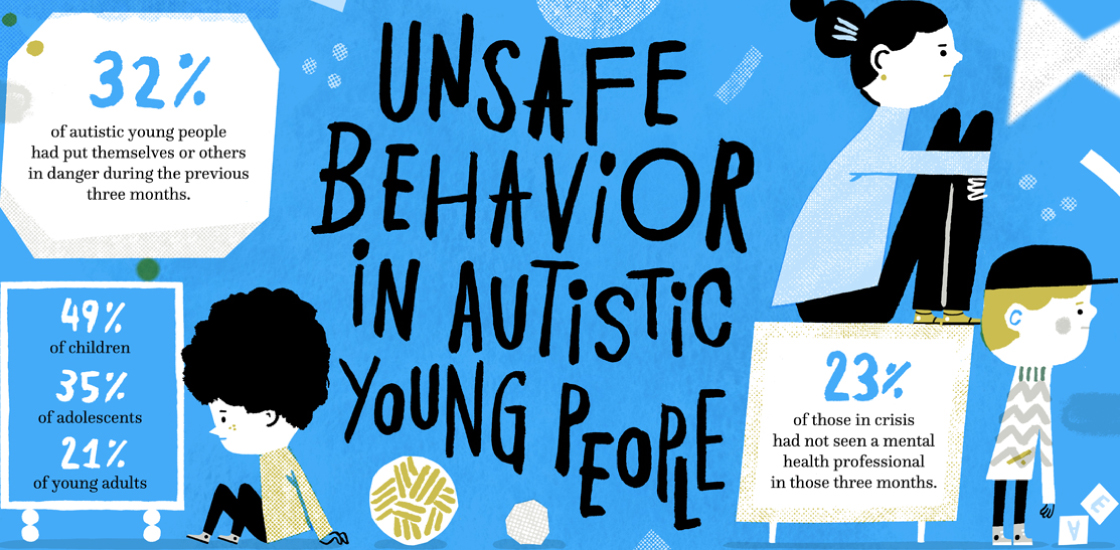Many young autistic people harm themselves, others
Nearly one-third of autistic young people put themselves or others in danger in any given three-month period.

Nearly one-third of autistic young people put themselves or others in danger in any given three-month period, according to a new study1. And nearly one in four of these young people will not have seen a mental health professional in that time.
The study, which looked at autistic people aged 3 to 25 years, is based on a parent survey.
The researchers sent the survey to a large database of families with autistic children; only 7 percent (462 families) completed it. The results may overestimate the prevalence of these events because families who have experienced them are more likely to respond, says Luther Kalb, assistant professor of neuropsychology at the Kennedy Krieger Institute in Baltimore, Maryland, who led the biostatistical analysis.
The researchers adjusted their analysis to account for this bias. “It’s still common enough to warrant attention,” Kalb says.
In autistic children younger than 12, the incidents tend to be related to self-injury and to wandering or running away, the researchers found. In young people aged 12 to 25, the episodes more often involve physical and verbal aggression, usually aimed at parents.
The younger an autistic person is, and the lower her quality of life, as reported by a parent, the more likely she is to have one of these incidents. Poor language skills and having a mother with depression also increase a child’s chances of having an incident.
The findings were published in October in Autism Research.
The work may help parents and clinicians develop plans to preempt and manage dangerous behaviors in autistic children. “We can start identifying populations that may need more intervention than others,” Kalb says.
References:
- Vasa R.A. et al. Autism Res. Epub ahead of print (2019) PubMed
Recommended reading

Too much or too little brain synchrony may underlie autism subtypes

Developmental delay patterns differ with diagnosis; and more
Explore more from The Transmitter

What birds can teach us about the ‘biological truth’ of sex

Noninvasive technologies can map and target human brain with unprecedented precision

